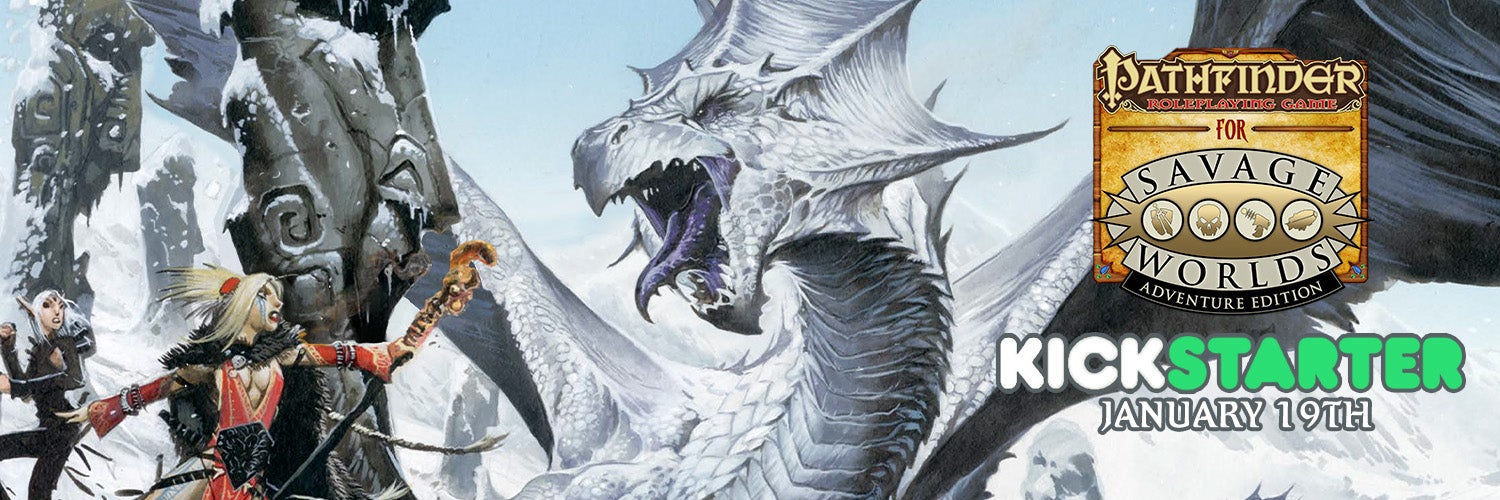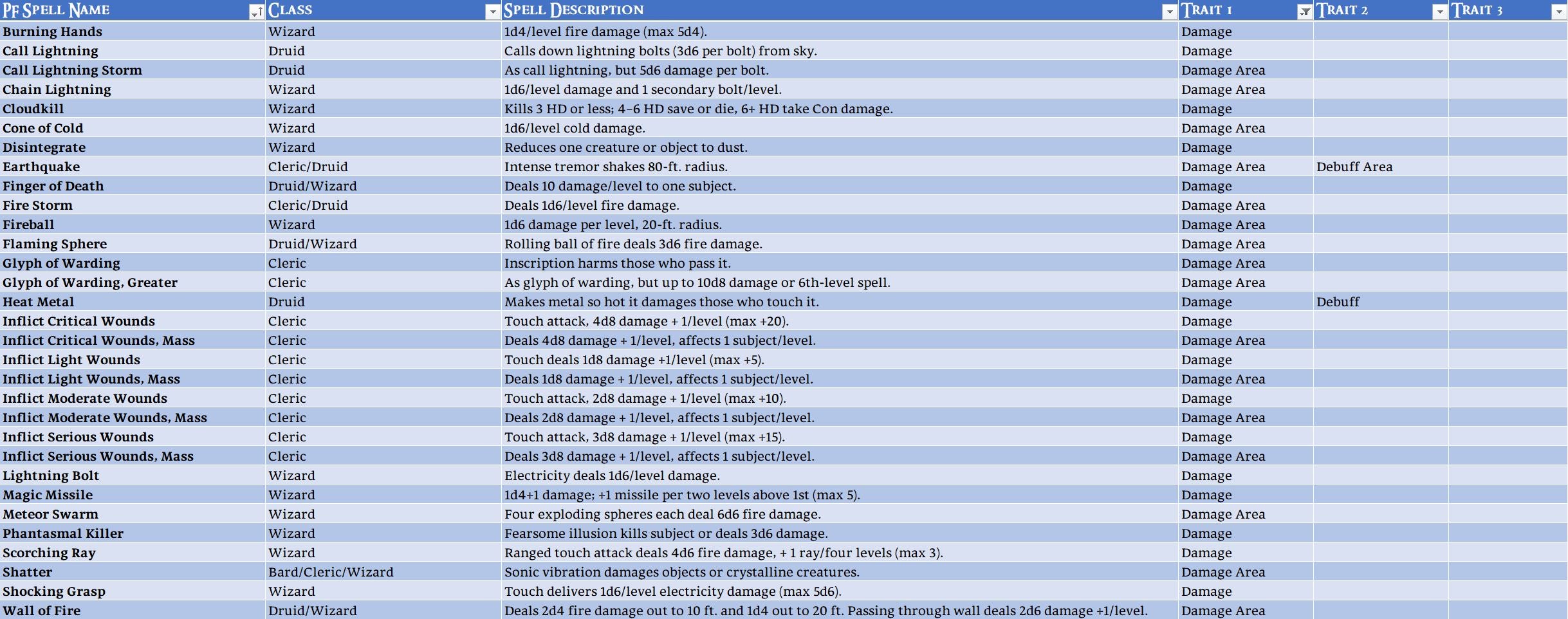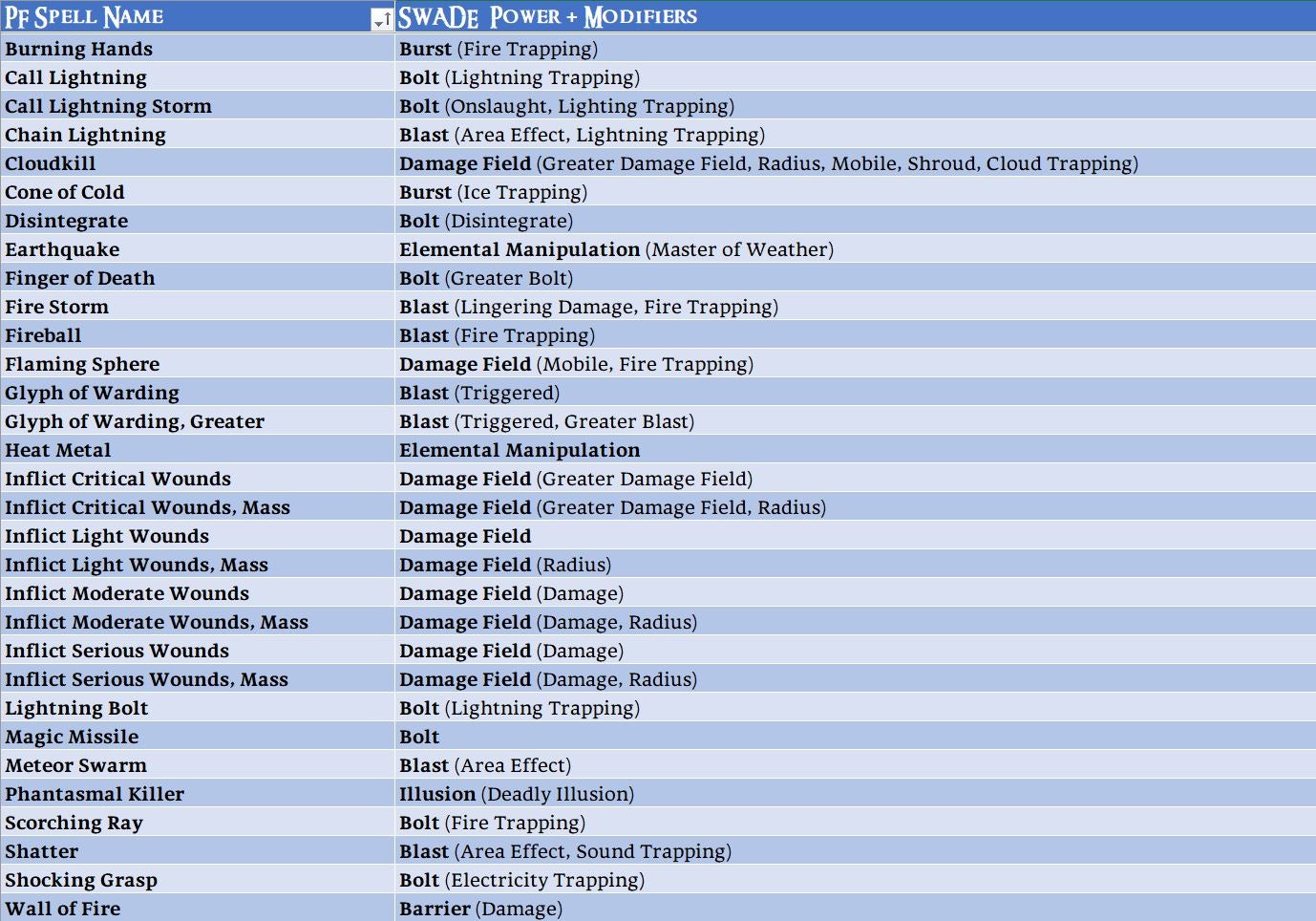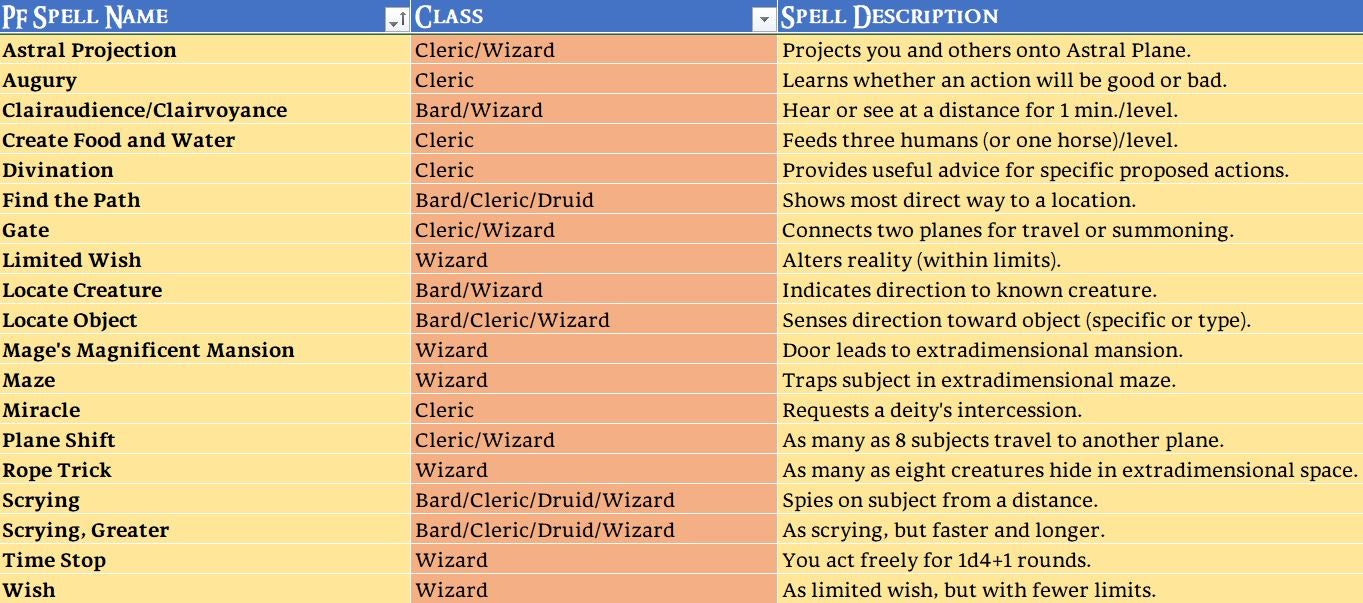Pathfinder Spells In Savage Worlds – How It Works
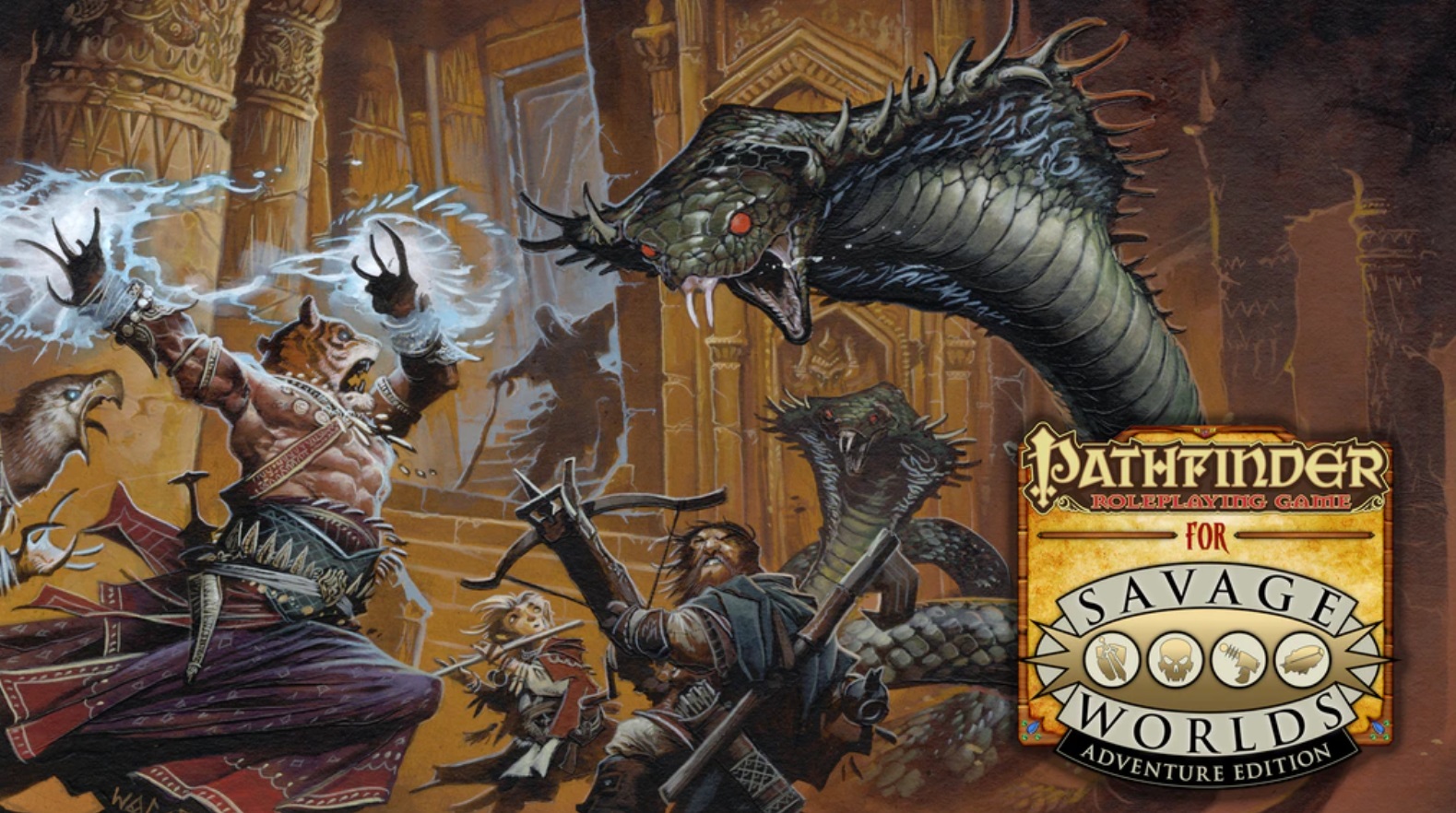
Pathfinder is coming to Savage Worlds, but that means big changes for the world of Golarion–how will the rules work in the new system? Take a look!
Pathfinder and Savage Worlds, two great tastes that fit together so well you’ll wonder why it didn’t happen sooner. Pathfinder has always been a little more pulpy action than dungeon-crawly, and the flow of a typical Pathfinder adventure path feels like a natural for the two-fisted action of a game of Savage Worlds. But, though these two flavors seem like they’ll easily combine, bringing the one into the world of the other means a lot of adjusting. So get out your typewriters, your books about orchids, and your plot that involves a serial killer, a victim, and a detective WHO ARE ALL THE SAME PERSON because it’s time to talk about adaptation.
Specifically we’re going to talk about how Pathfinder Spells are getting adapted into Savage World’s powers, which the folks at Paizo outlined in a recent blog post. It takes a little bit of work, but you can see how it all shakes out. Let’s take a look.
via Paizo
The key lies in looking at the broad spectrum of what Pathfinder’s spells do compared to how powers in Savage Worlds work. As Donald Schepis, developer at Pinnacle Entertainment Group puts it, one of the first things they did was break down the spells into some broad categories:
- Deal Damage
- Deal Damage in an Area
- Heal
- Heal in an Area
- Buff an Ally
- Buff Allies in an Area
- Debuff an Enemy
- Debuff Enemies in an Area
- Remove an Effect
- Remove Effects in an Area
- Cause a Social Effect
- Cause Social Effects in an Area
- Mimic the Usage of a Skill
- An Impossible Effect
This lets designers compare the different traits, and then figure out how to best replicate them with Savage Worlds powers. As Schepis explains the process:
Instead of having spell slots of different levels, you have a pool of Power Points. Each power has a listed cost you spend when you successfully activate that power (a roll of four or greater on your arcane skill). In addition to the base cost, most powers also have Power Modifiers that increase the power’s cost to give it extra effects. They also have trappings: the narrative description of how the power functions that the player defines when they gain the power.
For example, the bread-and-butter direct damage power in Savage Worlds is bolt. It costs one Power Point, shoots out at range, and deals a base of 2d6 damage. It also has the Damage Power Modifier that increases our base damage by 1d6. Remember, we don’t have hit points in Savage Worlds, so doing an extra d6 damage at any point is a pretty good damage bump.
AdvertisementWith trappings alone, we can use bolt to mimic call lightning, lightning bolt, magic missile, and scorching ray. Magic missile has many additional rules that tie into Pathfinder’s specific systems, but otherwise is just like bolt; it’s a ranged attack that hits a target to deal damage.
Which takes the list of damaging spells, for instance, and converts it from this:
To something like this:
Cloudkill, in particular, shows off how to work the specifics of something that’s calibrated to Pathfinder and shoving it into Savage World’s rubric. They take the Damage Field power, add a damage modifier to boost its damage, and boost the effect to approximate the larger size without going too overboard.
Anyway there’s a lot of work that goes into the conversion, so that you don’t have to do all of the switching of levers once the book is out. Here’s a preview of the new Pathfinder powers:
And if you want to see more, you can tune in on Thursday to learn more about Pathfinder in Savage Worlds.
Happy Adventuring!


